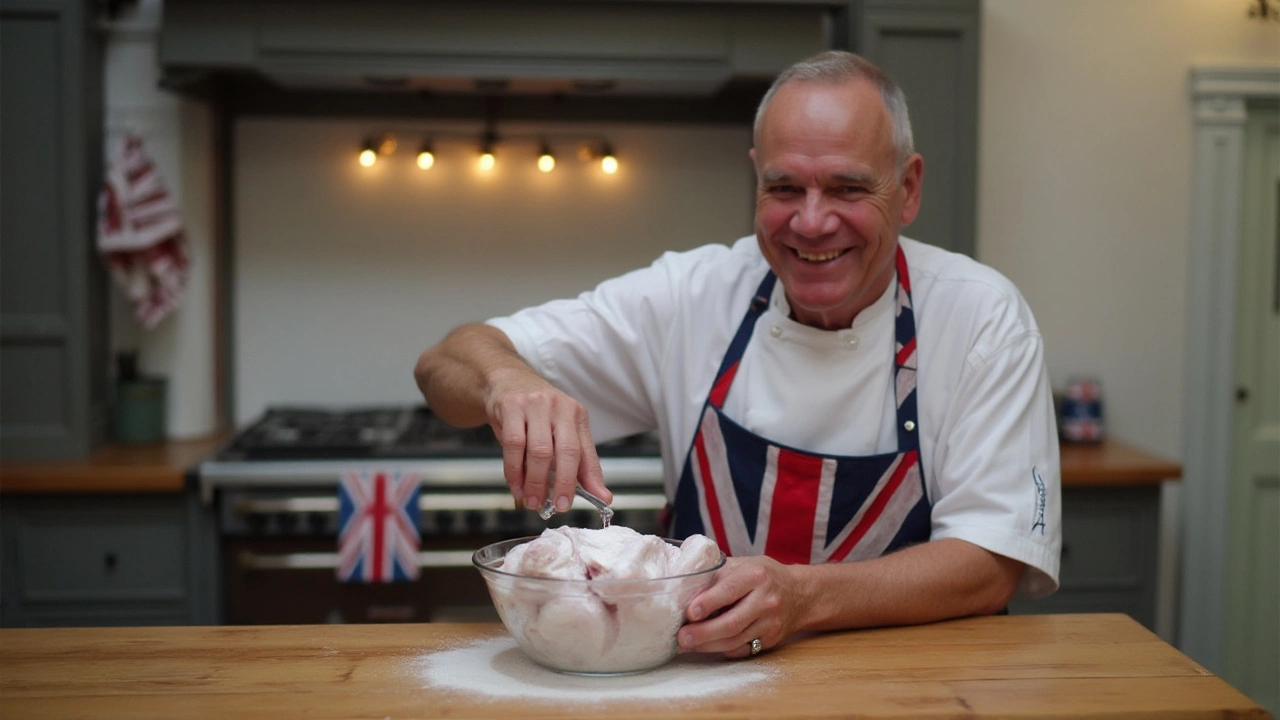Chicken Preparation Made Simple
Whether you’re aiming for a quick weeknight dinner or a weekend roast, the way you handle chicken before it hits the heat makes all the difference. You don’t need fancy tools or a chef’s degree – just a few solid habits and a bit of know‑how.
Trim, Pat Dry, and Season Right
The first step is to trim away any leftover fat or cartilage. A clean piece cooks more evenly and looks nicer on the plate. After trimming, pat the chicken dry with paper towels. Moisture on the surface turns into steam, which can prevent a good sear and leave the meat soggy.
Seasoning should happen right after you dry the meat. A simple mix of salt, pepper, and a splash of olive oil is enough for most dishes. If you have time, sprinkle the seasoning and let the chicken rest for 15‑20 minutes. That short pause lets the salt draw out moisture, then re‑absorb it, which firms up the texture and boosts flavor.
Tenderizing Techniques That Really Work
One of the biggest complaints about chicken breast is that it can turn rubbery. A quick pound with a meat mallet or a fork‑based poke‑tenderizer breaks down muscle fibers, giving you a more even thickness and a softer bite. Another low‑effort trick is to marinate in a bit of yogurt or buttermilk for 30 minutes to an hour. The mild acidity gently loosens the proteins, so the meat stays juicy when you cook it.
If you’re cooking whole pieces, consider brining. Dissolve 1 tablespoon of salt in 2 cups of water, submerge the chicken for 30 minutes, then rinse and dry. The result is a noticeable increase in moisture retention, especially for the lean breast meat.
Pick the Right Cooking Method
Different methods bring out different qualities. Baked chicken, especially when covered with a foil tent for the first half, stays moist and cooks evenly. Stove‑top cooking gives you a quick crust; just make sure the pan is hot before the chicken touches it. For hands‑off cooking, a slow cooker works fine – just add enough liquid and keep the temperature low to avoid drying out the meat.
Our post “How to Make Chicken Breast Extra Tender” walks you through a step‑by‑step process using a simple marinade and pan‑sear technique. If you’re debating baked versus stove‑top, the “Baked vs Stove Top Chicken: Which Method Wins?” article breaks down the pros and cons of each style, so you can pick the one that matches your schedule.
Finish with Flavor and Store Smart
Don’t forget a finishing touch. A squeeze of lemon, a drizzle of herb‑infused oil, or a quick splash of butter at the end adds a bright note and helps lock in moisture. When you have leftovers, slice the chicken while it’s still warm and store it in an airtight container with a slice of bread or a drizzle of sauce. This prevents it from drying out in the fridge and keeps it ready for salads, wraps, or quick reheats.With these straightforward prep steps, you’ll move from “just okay” to consistently tasty chicken dishes, no matter the recipe you’re tackling.

Why Rinsing Baking Soda from Chicken is Essential
Using baking soda as a meat tenderizer is common, yet forgetting to rinse it off can lead to unexpected results. This oversight may affect both the taste and safety of the dish. Learn why this step is crucial, discover the science behind it, and pick up some useful tips for perfecting your chicken recipes. From unexpected textures to surprising flavor alterations, uncover what might happen if baking soda is not rinsed off chicken.
More Detail